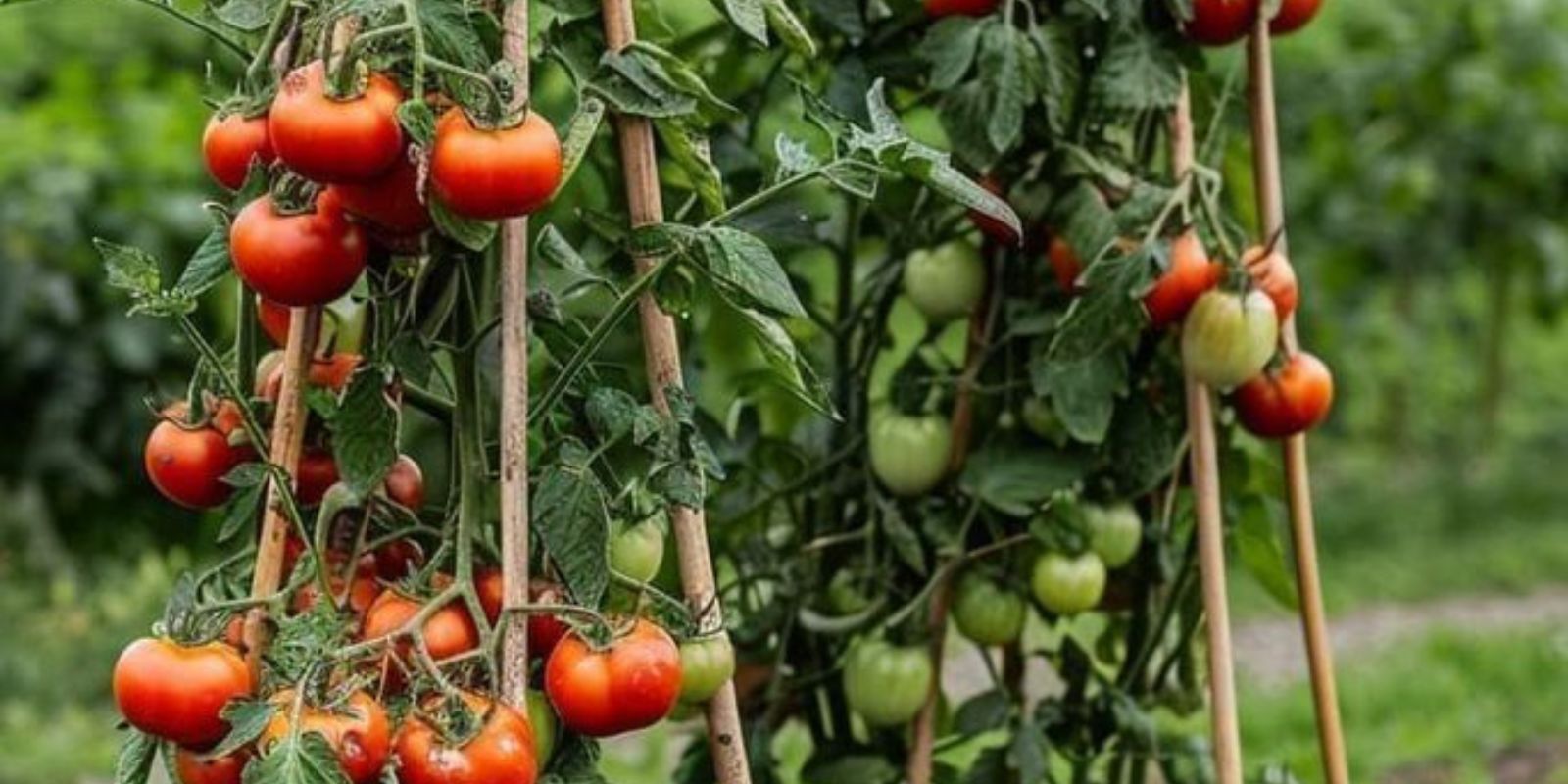Tomatoes are a staple crop in many home gardens, prized for their versatility, taste, and nutritional benefits. However, growing healthy, productive tomato plants requires more than just planting seeds and watering them occasionally. Even experienced gardeners can fall prey to common mistakes that affect the quality and quantity of their harvest.
In this guide, we’ll explore 20 common tomato-growing mistakes and how you can avoid them to ensure your plants thrive and yield a plentiful harvest.
1. Poor Soil Preparation
Mistake: Planting tomatoes in poorly prepared soil.
Solution:
Tomatoes need rich, well-draining soil with plenty of nutrients to thrive. Start by testing your soil’s pH and fertility. Ideal soil pH for tomatoes is between 6.0 and 6.8. Add organic compost or well-rotted manure to enrich the soil, improve its structure, and promote healthy root development.
2. Planting at Incorrect Depths
Mistake: Planting tomato seedlings too shallow or too deep.
Solution:
Tomatoes are unique because their stems can grow roots when buried. Plant seedlings deeper than they were in their nursery pots, leaving only the top few leaves above the soil. This encourages stronger root systems, which result in healthier plants.
3. Overwatering
Mistake: Watering too often or allowing water to stagnate.
Solution:
Tomatoes require consistent but not excessive moisture. Water deeply once or twice a week, allowing the soil to dry slightly between waterings. Overwatering can lead to root rot and fungal diseases. Consider using a drip irrigation system for more controlled watering.
4. Underwatering
Mistake: Neglecting to water your plants enough.
Solution:
During hot weather or dry spells, tomatoes need more water. Keep the soil evenly moist, especially as the fruit sets. Inconsistent watering can lead to issues like blossom-end rot or cracked fruit.
5. Inadequate Sunlight
Mistake: Growing tomatoes in shaded areas.
Solution:
Tomatoes are sun-loving plants that require 6–8 hours of direct sunlight daily. Choose a sunny spot in your garden to maximize fruit production and prevent leggy, weak growth.
6. Improper Spacing
Mistake: Planting tomato plants too close together.
Solution:
Overcrowding reduces airflow and increases the risk of diseases like blight. Space plants 18–24 inches apart for determinate varieties and at least 24–36 inches for indeterminate ones to ensure adequate air circulation.
7. Lack of Support
Mistake: Letting plants sprawl on the ground without support.
Solution:
Tomato plants become heavy as they grow. Use stakes, cages, or trellises to support the stems and keep the fruit off the ground, reducing the risk of rot and pest damage.
8. Ignoring Pruning
Mistake: Allowing plants to become too bushy.
Solution:
Pruning is essential for indeterminate varieties. Remove suckers (small shoots growing between the main stem and branches) to direct the plant’s energy into fruit production rather than foliage.
9. Failing to Rotate Crops
Mistake: Planting tomatoes in the same spot every year.
Solution:
Tomatoes are susceptible to soil-borne diseases. Rotate them with non-nightshade crops like beans, lettuce, or carrots to reduce disease buildup and nutrient depletion in the soil.
10. Pest Infestations
Mistake: Ignoring pest problems.
Solution:
Common pests include aphids, whiteflies, and tomato hornworms. Inspect your plants regularly for signs of infestation and use organic solutions like neem oil or introduce beneficial insects like ladybugs to control pests.
11. Neglecting Disease Prevention
Mistake: Overlooking signs of fungal or bacterial diseases.
Solution:
Choose disease-resistant varieties and avoid overhead watering to reduce humidity around plants. Remove any infected leaves promptly and dispose of them to prevent the spread of diseases like blight and leaf spot.
12. Over-fertilizing with Nitrogen
Mistake: Using too much nitrogen fertilizer.
Solution:
While nitrogen promotes foliage growth, excessive amounts can reduce flowering and fruiting. Use a balanced fertilizer or one that is slightly higher in phosphorus and potassium to encourage fruit production.
13. Neglecting Mulching
Mistake: Not mulching around tomato plants.
Solution:
Apply 2–3 inches of mulch (like straw, wood chips, or shredded leaves) around your plants. Mulch helps retain soil moisture, regulate soil temperature, and suppress weeds.
14. Blossom-End Rot
Mistake: Ignoring calcium deficiencies.
Solution:
Blossom-end rot causes dark, sunken spots on fruit. Prevent it by maintaining consistent watering and adding calcium-rich amendments like crushed eggshells or lime to your soil.
15. Ignoring Temperature Needs
Mistake: Exposing plants to extreme temperatures.
Solution:
Tomatoes thrive in temperatures between 70–85°F. Use row covers to protect young plants from cold and shade cloth to shield them from intense heat.
16. Poor Pollination
Mistake: Assuming pollination happens naturally.
Solution:
Tomatoes are self-pollinating, but factors like high humidity or lack of wind can hinder pollination. Gently shake flowers or use a small brush to transfer pollen manually.
17. Allowing Weeds to Compete
Mistake: Letting weeds grow unchecked.
Solution:
Weeds compete for nutrients and water, weakening your tomato plants. Regularly weed around your garden and use mulch to suppress weed growth.
18. Overuse of Pesticides
Mistake: Applying excessive pesticides.
Solution:
Pesticides can harm beneficial insects and disrupt the ecosystem. Use them sparingly and opt for organic solutions whenever possible.
19. Improper Harvesting
Mistake: Harvesting fruit too early or too late.
Solution:
Pick tomatoes when they are fully colored and slightly firm. Harvesting too early may reduce flavor, while waiting too long can lead to overripe fruit.
20. Choosing the Wrong Varieties
Mistake: Planting varieties unsuited to your region.
Solution:
Select varieties that thrive in your climate and suit your gardening goals. For example, grow determinate varieties for small spaces or indeterminate ones for continuous harvests.
Conclusion: Grow Tomatoes Like a Pro!
By avoiding these common mistakes and following best practices, you can enjoy a thriving tomato garden that produces delicious, healthy fruit all season long. Whether you’re a beginner or an experienced gardener, paying attention to your plants’ needs will ensure your hard work pays off.
What’s your secret to growing the perfect tomatoes? Share your tips in the comments below!
#TomatoGrowingTips #HomeGardening #BountifulHarvest #GardenHacks #OrganicFarming

